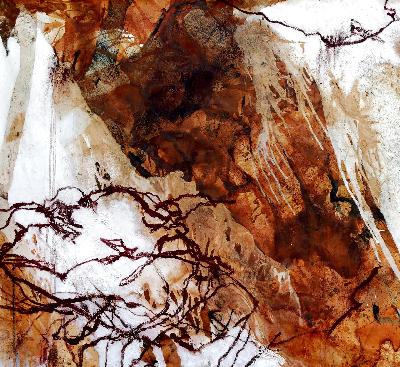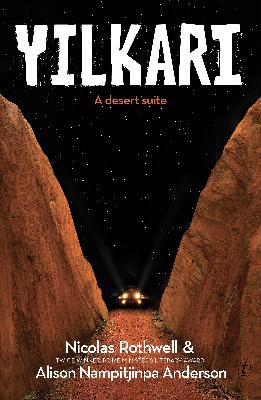Discover The Art Show
The Art Show

The Art Show
Author: ABC
Subscribed: 322Played: 16,718Subscribe
Share
© Copyright 2025, Australian Broadcasting Corporation. All right reserved.
Description
Visual artists tell you why and how they create! From studio visits, intimate interviews, and live issues, we take art out of the gallery and into your ears.
425 Episodes
Reverse
Great conversations with visual artists, gallery and museum directors and curators.
Three artists in their prime talk to The Art Show...CJ Hendry specialises in hyper-real paintings, but she’s just as comfortable with the art of the spectacle as she is creating the art itself - her recent showcase exhibition in NY got shut down because it drew too many people.Fellow expat Ricky Swallow has been taking LA by storm with his striking bronze sculptures, but is returning home for his first foray into public art.And Sydney-based Pasifika artist Latai Taumoepeau's monumental work is a vital call to action on climate change.
Nell, who has a major retrospective at Heide Museum, speaks to Ramesh Mario Nithiyendran about ghost motifs, smiling poop, and how collaborative projects have changed her perspective on art.The Icelandic artist Olafur Eliasson speaks to Rosa Ellen about a project he undertook to document the glaciers and glacial rivers of Iceland over two decades. You can see Presence, a major collection of his work, at GOMA in Brisbane. And Mike Hewson explains how he came to create playgrounds, saunas and barbecues as part of his art practice and how he become comfortable with the public clambering all over his work. Mike's latest exhibition, The Key's Under the Mat, is on at the AGNSW.
In episode 3 of the series Dangerously Modern, we're following the journey of the magnificent Dorrit Black. Dorrit arrived in London in 1927 and embraced modernism in the new medium of lino cut printmaking. She went on to start her own Modern Art Centre in Sydney in the 1930s and inspired the next generation of artists. But professional rivalry and her status as an ‘unmarried daughter’ would challenge her autonomy and legacy. Produced and presented by Rosa Ellen and commissioned by the Art Gallery of South Australia.After a season at AGSA, the exhibition of Dangerously Modern is on at the Art Gallery of NSW until February 16, 2026.
In episode 2 of the series Dangerously Modern we follow the painter Stella Bowen, who left Adelaide for Europe and was part of a storied avant-garde art scene in Paris in the 1920s. Overseas, a young Stella met the writer Ford Maddox Ford, a relationship that sparked her intellectually but ultimately sabotaged her own career. It wasn't until she struck out on her own as a single mother, that Stella painted her most compelling work and achieved a fragile success.Produced and presented by Rosa Ellen and commissioned by the Art Gallery of South Australia.
In the early 20th century, an unprecedented wave of women artists left a conservative Australia to pursue modern art in Europe.Margaret Preston is a household name in Australian art, best known for her bold paintings and woodcuts of native wildflowers. But to achieve this level of visibility she had to inhabit a bullet-proof confidence and find a sense of freedom, away from the strictures of a Victorian society. In episode 1, hear how she found freedom in an unlikely Irish rural setting, discovered modernism and, it’s speculated, pursued queer relationships.Produced and presented by Rosa Ellen and commissioned by the Art Gallery of South Australia.
Every spring, the Museum of Contemporary Art hands its galleries to the next generation. Primavera becomes a testing ground: a place where young artists bend, stretch, and spark new ways of seeing.This year’s edition, curated by Tim Riley Walsh, circles around ideas of the made and the manufactured: how things are assembled, engineered, cobbled together, whether objects, identities, or whole worlds.Tim Riley Walsh and artist Keemon Williams join Micheal Do in his final episode as host for the year.
Sisters Anney and Mechelle Bounpraseuth grew up in a world that promised paradise later. But they chose otherwise, leaving their religion to begin making paradise now!For Anney, cloth and sequins became radiant scenes of joy and survival. And for Mechelle, cans of lychees and jars of Tiger Balm, forged in clay, carry memory and care.Their work carries grief and humour, kitsch and devotion, and memories of Cabramatta markets, their mother's hands and the textures of Lao family life.
Leigh Bowery was not a man you could overlook. Born in Sunshine, Melbourne, he left Suburbia for Soho, London, remaking himself into someone impossible to contain.At the club Taboo, he was ringmaster of chaos. For artist Lucian Freud, muse. For the queer underground, Leigh was revelation: proof that life itself could be spectacle, and spectacle survival.Tate Modern’s recent exhibition Leigh Bowery! brought his world back into focus, and the curator Fiontan Moran talks about Leigh’s legacy: how a Melbourne boy became a myth, and why he continues to matter today.
What would it mean to eat breakfast with a Brett Whiteley or to pass a Sally Gabori in the corridor? Art, not as something you visit, but something that visits you?That's the idea behind Artbank, a federal experiment that began in 1980 and now holds more than 11,000 works of Australian contemporary art.Works that circulate into offices, foyers, and living rooms; into the lives of people who might never have thought of themselves as collectors.Barry Keldoulis, Senior Art Consultant at Artbank, Ray Wilson, an Artbank client, and artist Monica Rani Rudhar, whose work is in the collection share their experiences with The Art Show.
To look at the art of Tschabala Self is to feel fabric think. Stitched velvet, printed cotton, painted skin: bodies collaged from memory and from life, all the way from Harlem to the Hudson.The characters that Tschabalala Self paints aren't just portraits, they fold together myth and the everyday They ask how we see and how we're seen. In Melbourne for her solo exhibition, Skin Tight at ACCA, Self talks art and politics, fabric and representation and takes us into her experience of New York.
Some landscapes don't just surround us, they get inside us. A windswept farm, a rugged coastline, a cave heavy with shadow: they're places that don't fade, but lodge in the memory.The work of photographer and video artist Sarah Rhodes, who was part of the ABC's Top 5 Arts program in 2025, explores the emotional registers of place: how landscapes can be more than just backdrops, and can instead become part of who we are.Sarah was a recent recipient of an honourable mention at the Bowness Photography Prize for her work, Chamber of Projection 1.
To write about art is really to write about looking. About how artists meet the world: what they notice; what slips through; what remains.In What Artists See, Quentin Sprague turns to twelve Australian artists, but Sprague doesn't just list their works, he lingers with how they see: what pulls at their attention and what do they uncover when the world pushes back?Speaking with Micheal Do, Quentin interrogates: when we look at art, what are we really seeing?
Two hundred years ago, a French wallpaper pictured the Pacific: the islands and empire in perfect harmony against windless calm seas. But it was decoration. Pure fantasy.Until artist Lisa Reihana made history flicker — adding ceremony, desire, misunderstanding, and violence.Her vast video work In Pursuit of Venus [infected] premiered in Auckland, then at the New Zealand Pavilion at the 2017 Venice Biennale. She took a 19th-century French wallpaper, once exotic decor, and transformed it into a living panorama.Reihana talks about what came after that breakthrough and about her latest pieces, at the Sydney Contemporary and Ngununggula.
Nusra Latif Qureshi has built a career extending South Asian painting traditions while pressing on empire, displacement, and desire — revealing how power cloaks itself in colour, and how history leaves its mark on objects.The House of Irredeemable Objects at MUMA brings together thirty years of Nusra Latif Qureshi’s work — an examination of tradition, history, and the everyday — alongside a new commission which draws on Monash University's rare books collection. Qureshi explores how objects can carry something larger than themselves — a trace, a wound, or a memory — and reminds us that beauty and violence often walk side by side.
Some paintings are sealed off from the world: neat, polished, contained.But Sophie Cape's canvases feel porous, weathered by the elements themselves. Not so much painted, as unearthed.Once an elite athlete, Sophie turned to art after devastating injuries.It's a path that has brought her attention and acclaim, including winning this year's Hadley's Art prize, Australia's richest prize for landscape painting.
Throughout his practice, the German artist Thomas Demand rebuilds the world in paper, meticulously constructing life-sized models of everyday spaces or scenes. Te scene is photographed, and the models destroyed.Demand is in Australia as the curator of the 38th Kaldor Public Art Project and here, it is the exhibition itself that becomes the artwork.Inspired by a work by Sol LeWitt, Demand has recreated the lines of the canvas in the three dimensional space of the gallery: walls float, suspended from wires, their skins wrapped in the colours of clay, moss, cobalt, and lemon.
Nicolas Rothwell writes at the edges of things. He's twice won the Prime Minister's Literary Award — for both fiction and non-fiction — and his work slides between both registers: fiction brushes against fact, philosophy slips into story.His latest novel, Yilkari: A Desert Suite, written with his wife, Alison Nampitjinpa Anderson, takes readers deep into the Western Desert, showing how Country makes art, how absence reveals, and how silence can heal.Rothwell reflects on his autodidactic approach to art and on the tension between concealment and revelation in the work from the Western Desert.
William Yang's photographs are part memoir, part invitation. Queer lives, Asian faces, vanished places — all lit with the soft glow of attention.For writer and broadcaster Benjamin Law discovering Yang's work felt uncanny. Like recognition. Like fate. The sense that someone, somewhere, had lived a version of his life and turned it into light.For Law, it wasn't just admiration. It was kinship. Two queer Asian men from regional Queensland. Two artists drawn to thresholds: of identity, of family, of desire, of home.This week on The Art Show, we explore what it means to feel seen in someone else's work, and the unexpected communion that can follow.
In 2020, Aperture magazine invited Garth Greenwell to write about Mark Armijo McKnight's photographs. The images immediately captivated him, offering new possibilities for thinking and feeling.Their work meets in shared spaces: the erotic, the poetic, desire and restraint, silence and shadow; both illuminating queer lives with honesty and complexity.What began as an assignment deepened into a deep, loving friendship, one that continues to reshape and expand their inner and outer worlds.








great interviews. Instagram is an interesting platform.